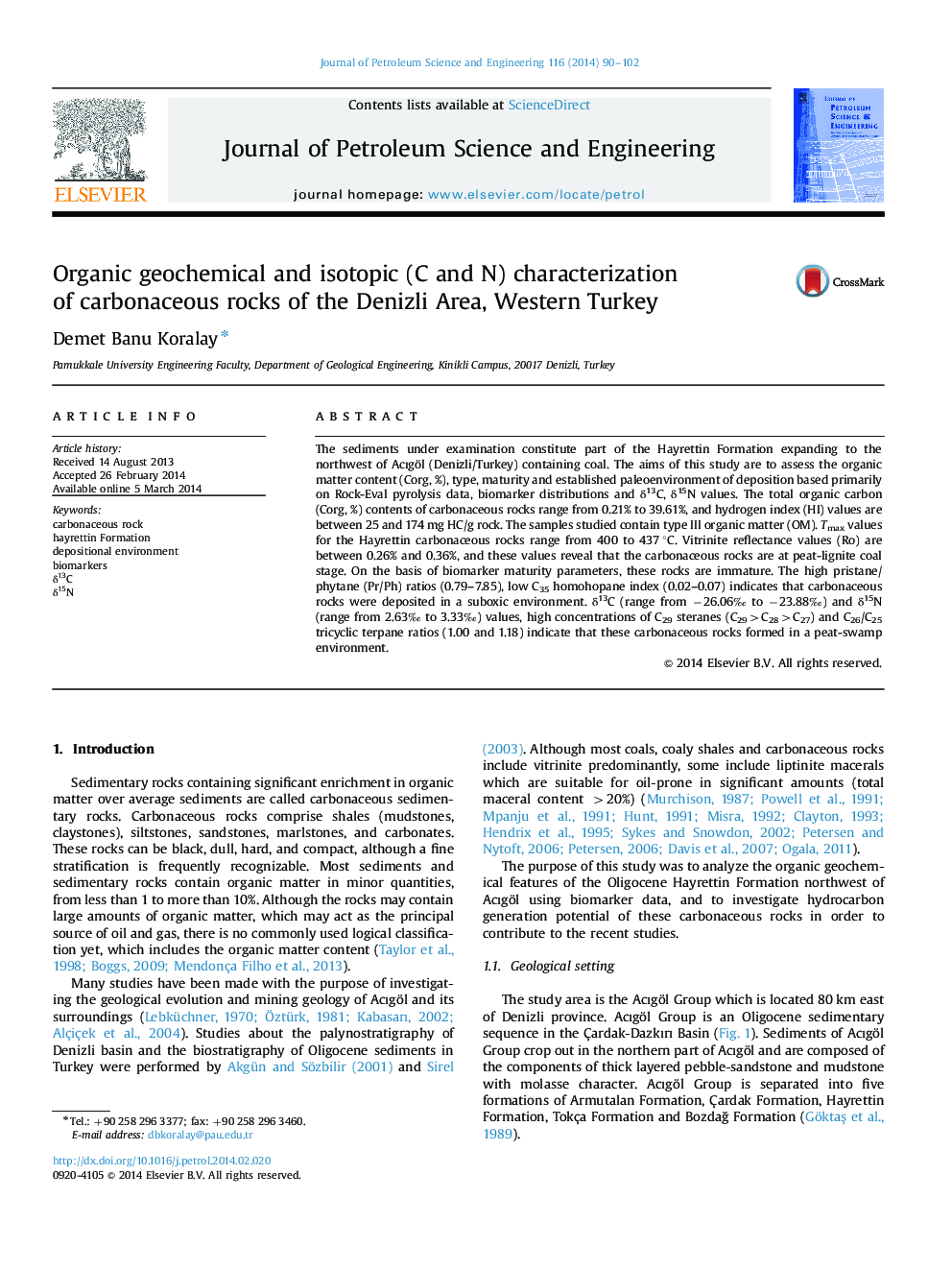| Article ID | Journal | Published Year | Pages | File Type |
|---|---|---|---|---|
| 1755135 | Journal of Petroleum Science and Engineering | 2014 | 13 Pages |
•Carbonaceous rocks from Oligocene Hayrettin Formation.•Rock-Eval pyrolysis, biomarker, δ13C, δ15N characterization.•Dominant component of carbonaceous rock is humic OM.•Samples have not experienced deep burial and they are thermally immature.•Deposition is peat-swamp environment where terrestrial material is abundant.
The sediments under examination constitute part of the Hayrettin Formation expanding to the northwest of Acıgöl (Denizli/Turkey) containing coal. The aims of this study are to assess the organic matter content (Corg, %), type, maturity and established paleoenvironment of deposition based primarily on Rock-Eval pyrolysis data, biomarker distributions and δ13C, δ15N values. The total organic carbon (Corg, %) contents of carbonaceous rocks range from 0.21% to 39.61%, and hydrogen index (HI) values are between 25 and 174 mg HC/g rock. The samples studied contain type III organic matter (OM). Tmax values for the Hayrettin carbonaceous rocks range from 400 to 437 °C. Vitrinite reflectance values (Ro) are between 0.26% and 0.36%, and these values reveal that the carbonaceous rocks are at peat-lignite coal stage. On the basis of biomarker maturity parameters, these rocks are immature. The high pristane/phytane (Pr/Ph) ratios (0.79–7.85), low C35 homohopane index (0.02–0.07) indicates that carbonaceous rocks were deposited in a suboxic environment. δ13C (range from −26.06‰ to −23.88‰) and δ15N (range from 2.63‰ to 3.33‰) values, high concentrations of C29 steranes (C29>C28>C27) and C26/C25 tricyclic terpane ratios (1.00 and 1.18) indicate that these carbonaceous rocks formed in a peat-swamp environment.
